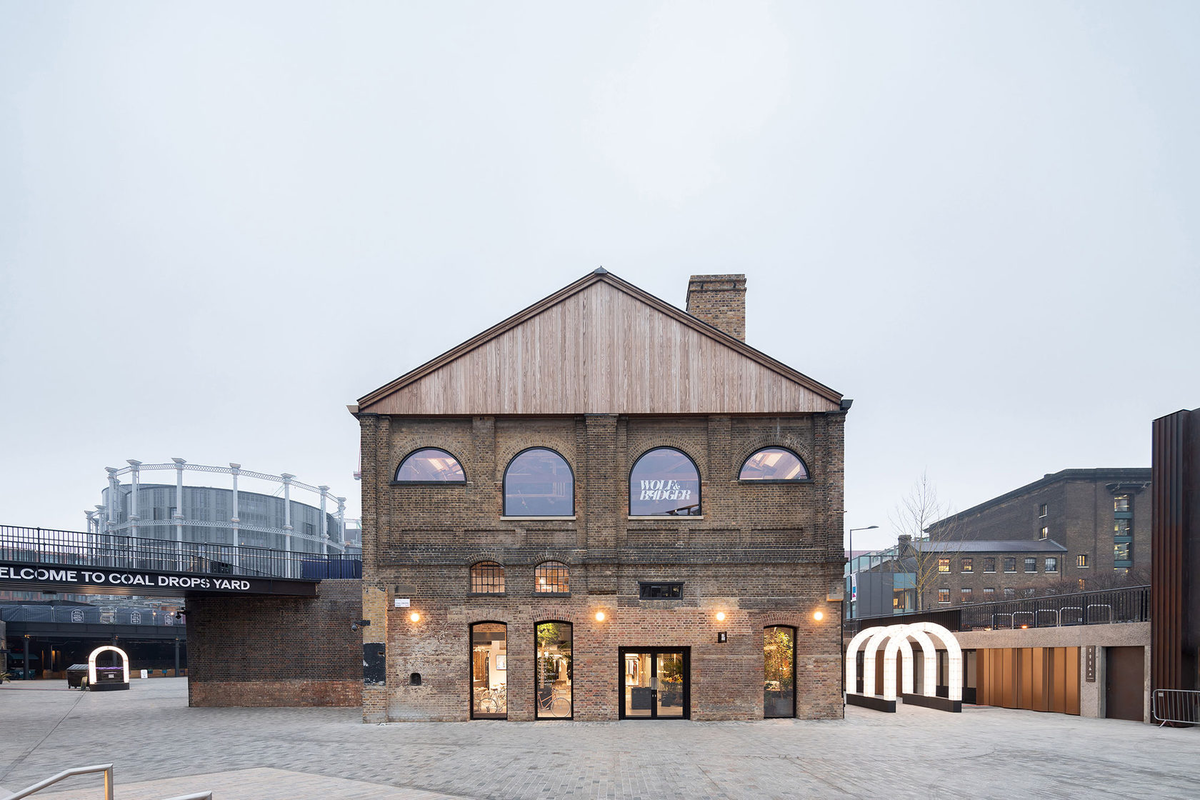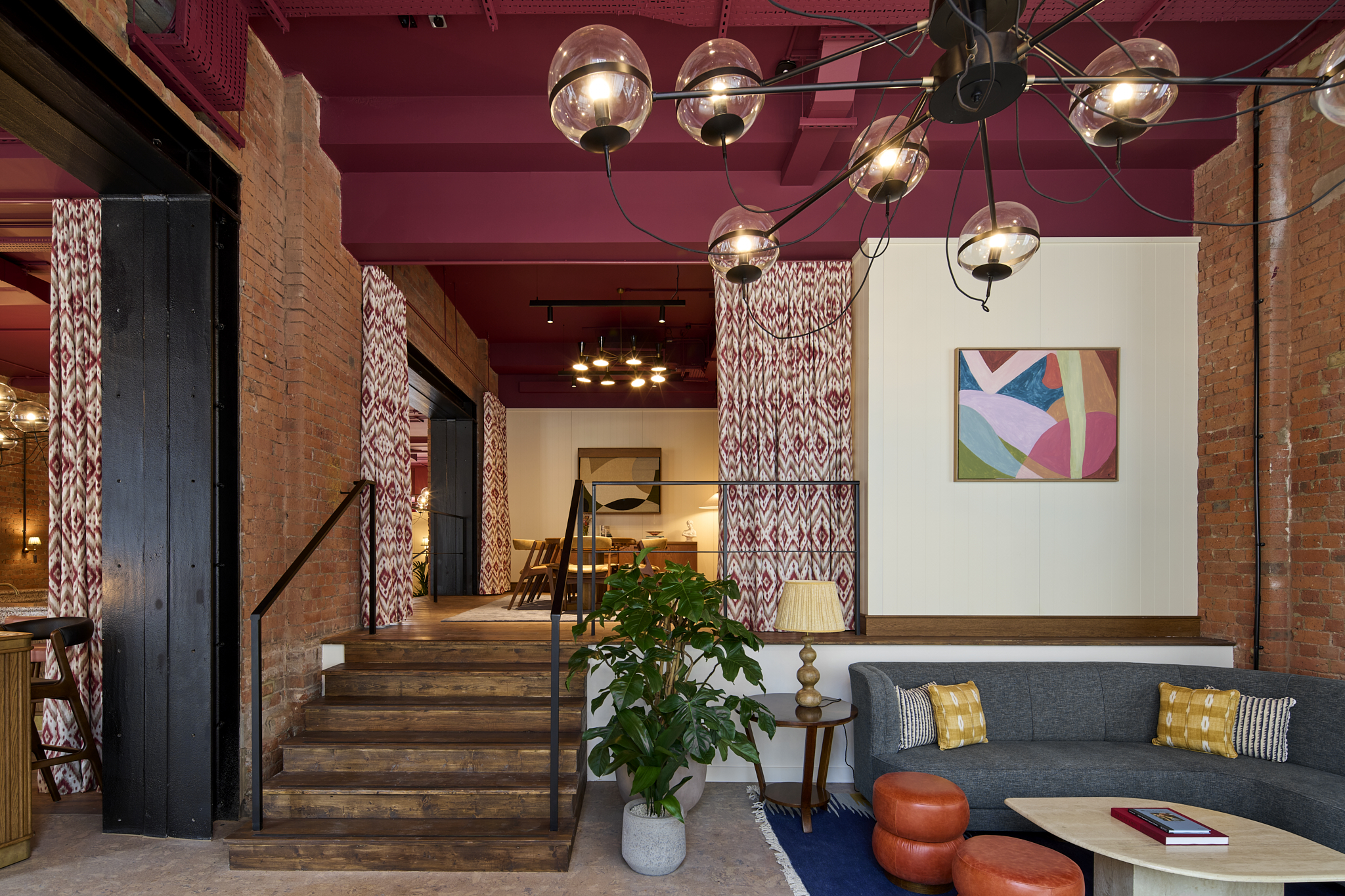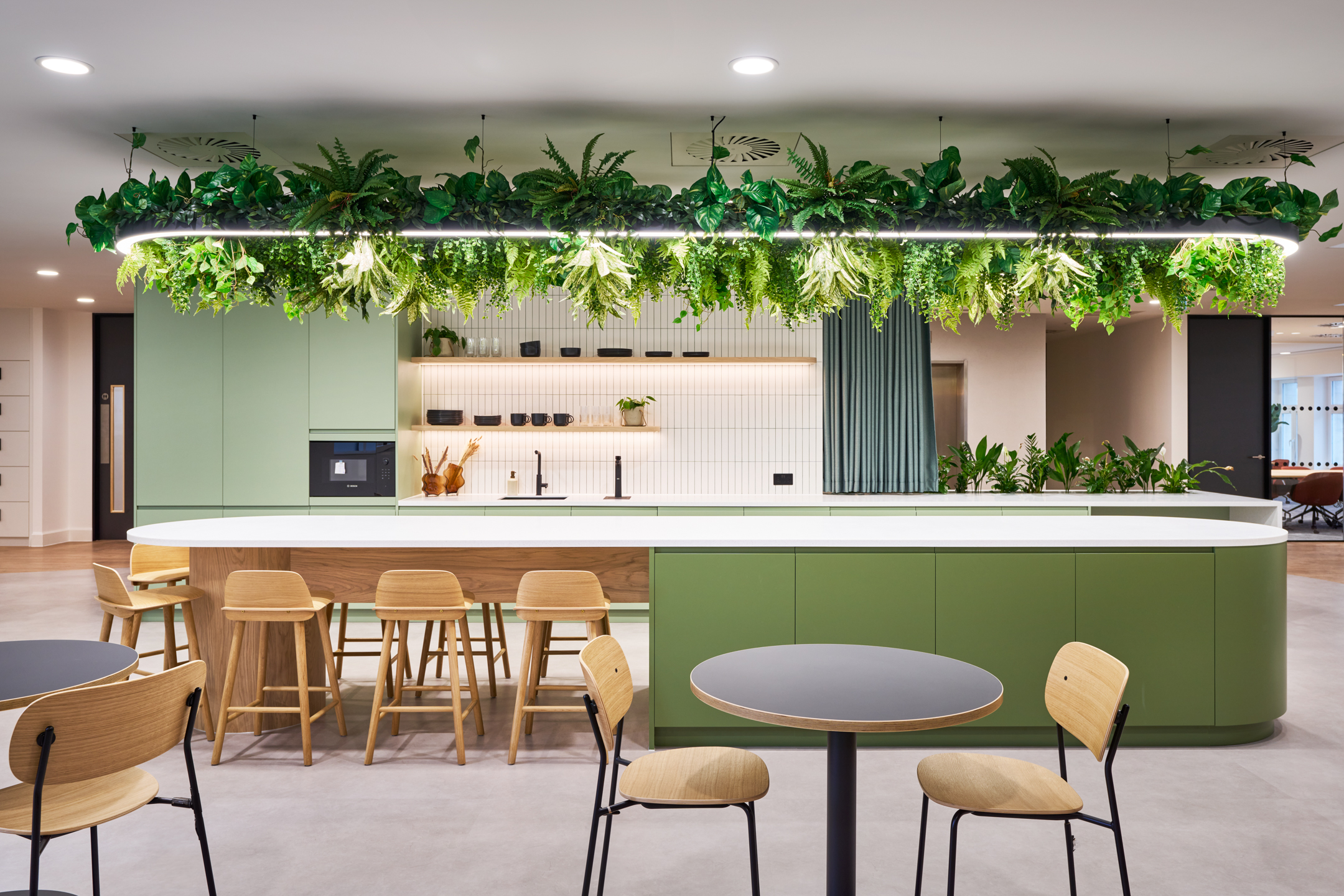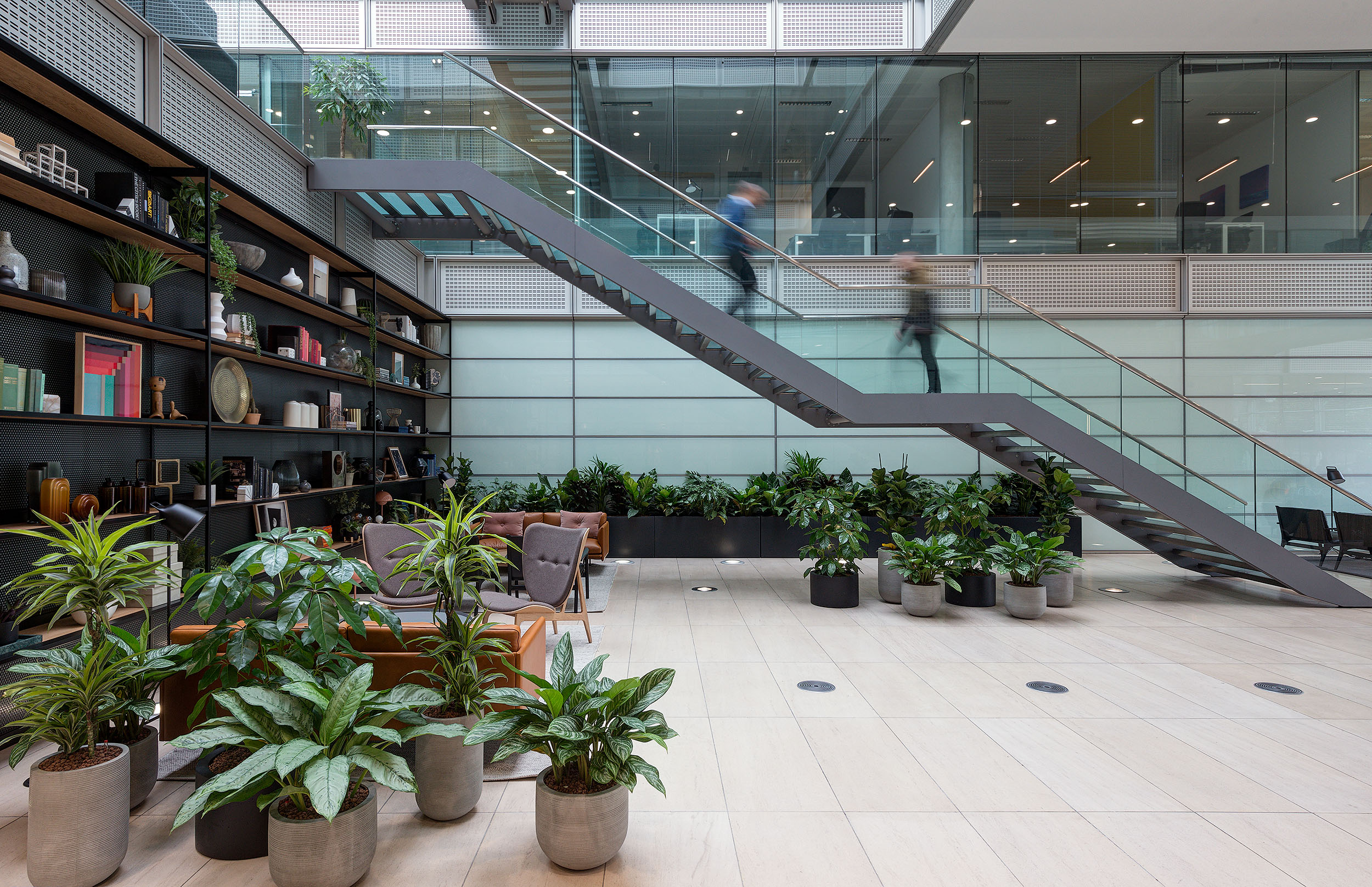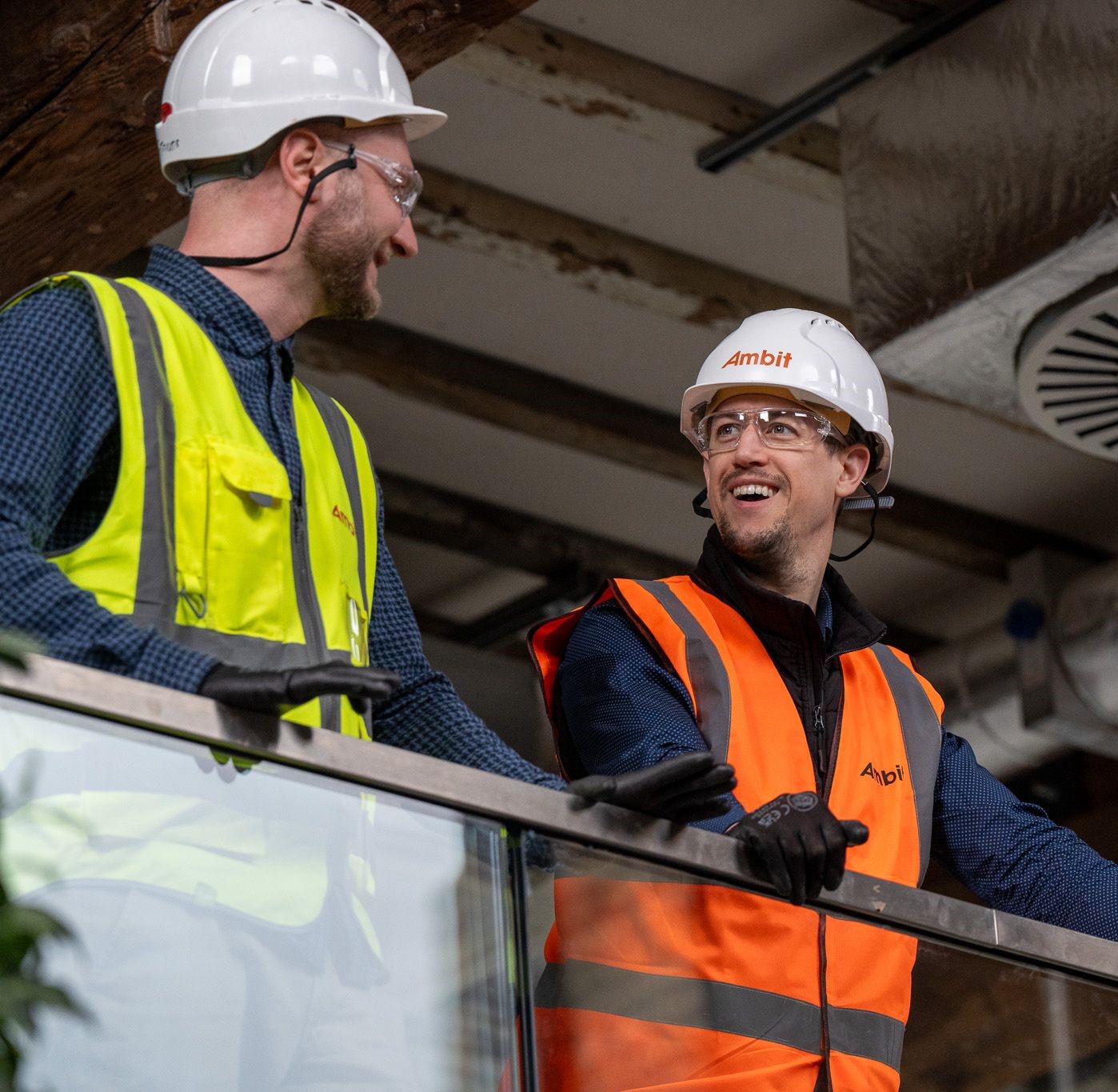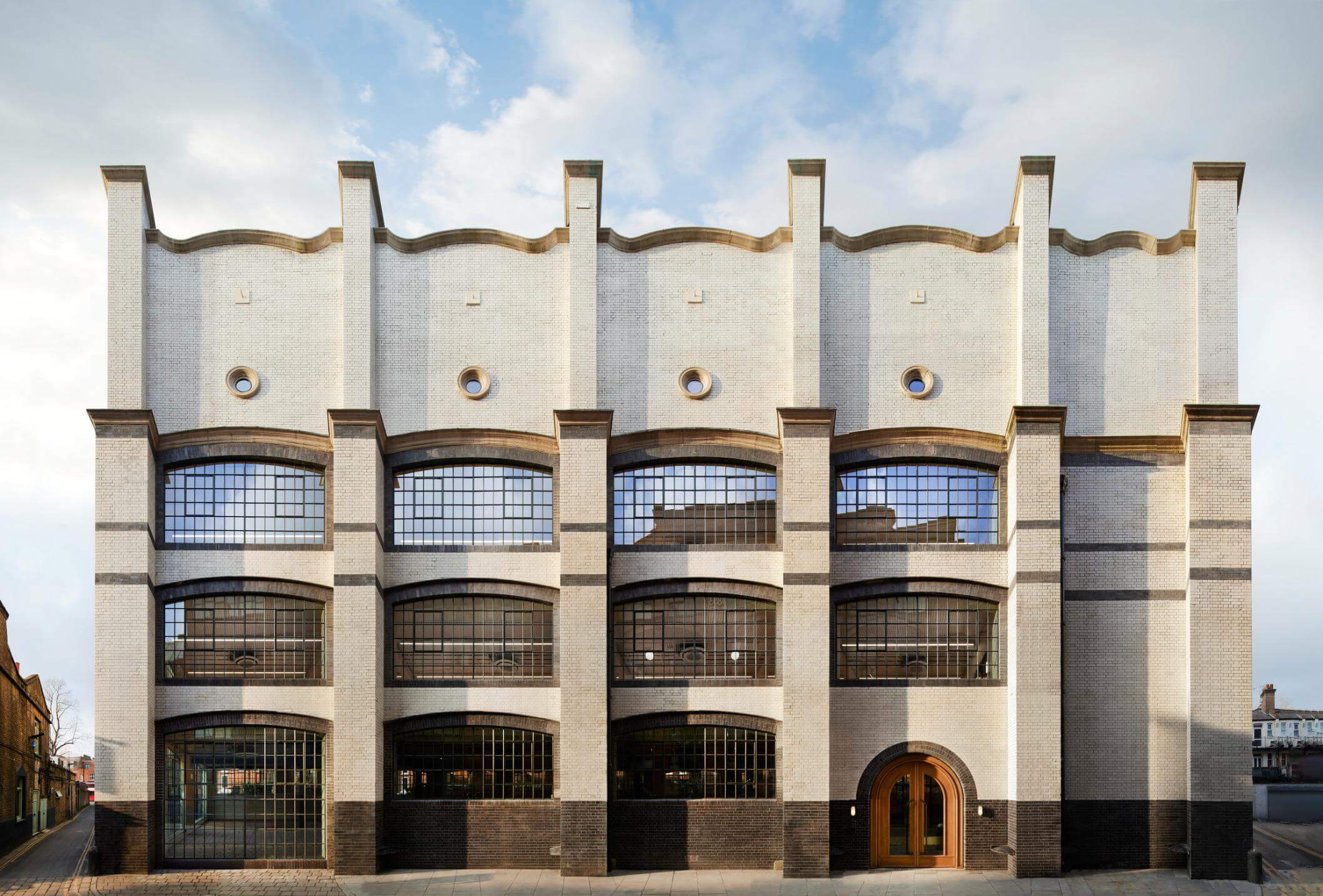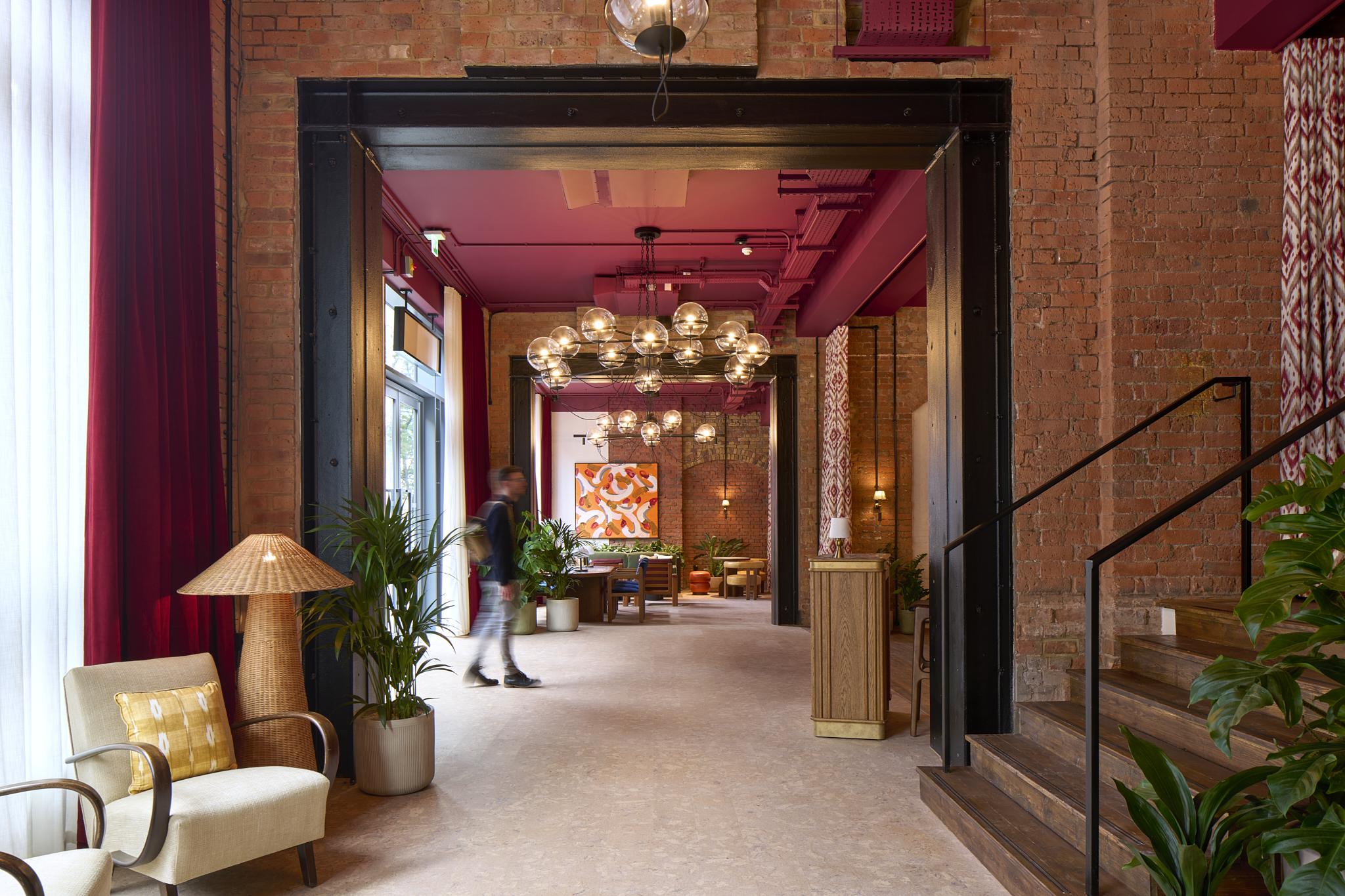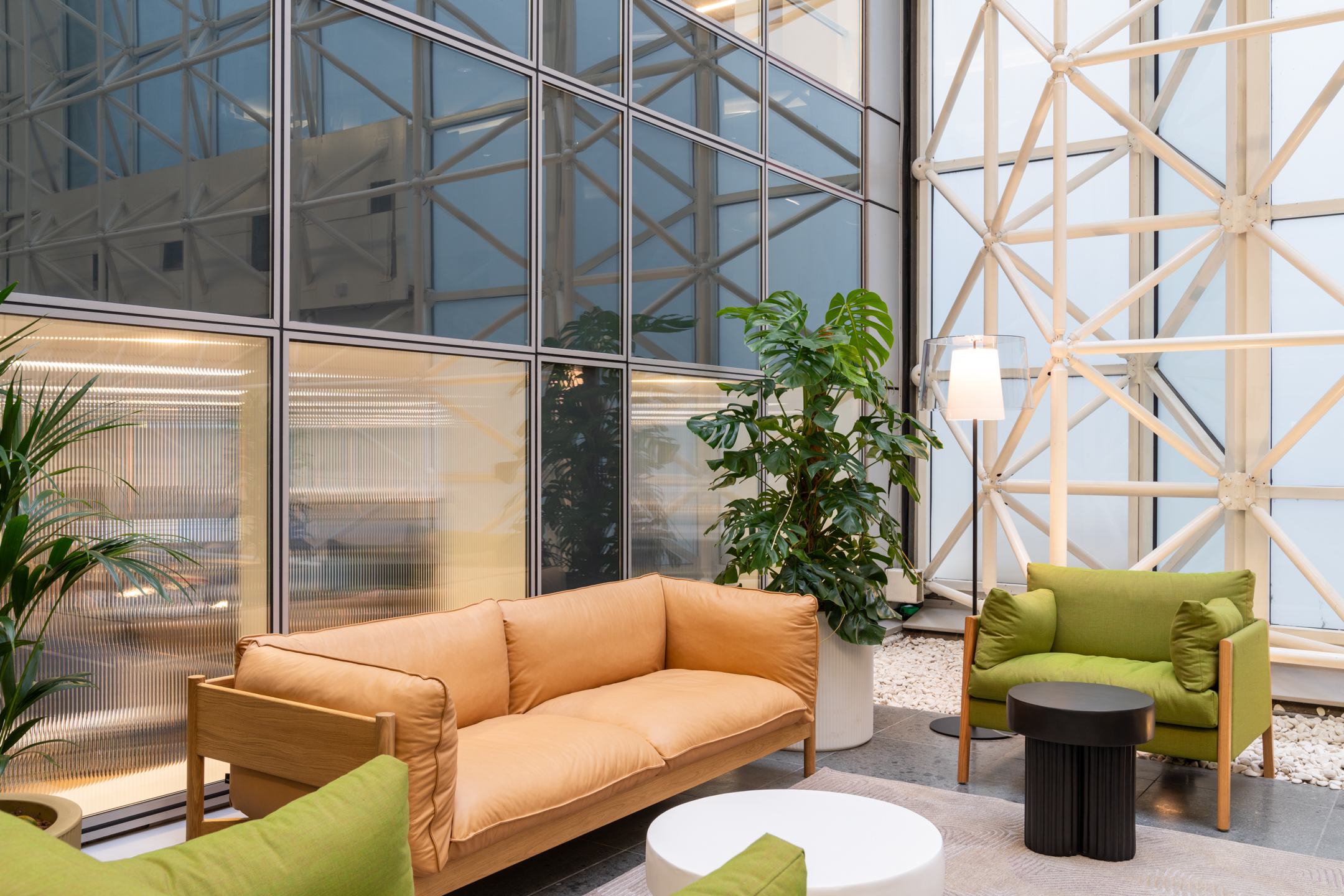The Future of Flexible Workspaces for the Hybrid Workforce
The shift towards flexible offices is rapidly reshaping the modern workplace, driven by the rise of the hybrid workforce. As of 2024, 64% of companies operate on a hybrid model, showing a significant change in how employees engage with their work environments.
Hybrid workers report the highest engagement rates at 34%, reflecting the need for adaptable office designs that cater to the diverse needs of a hybrid workforce. The benefits of hybrid work extend beyond engagement, with 43% of office workers reporting a better work-life balance as one of the main advantages of hybrid work. Prioritising flexibility creates office spaces that enhance productivity, collaboration, and employee wellbeing in this evolving era of work.
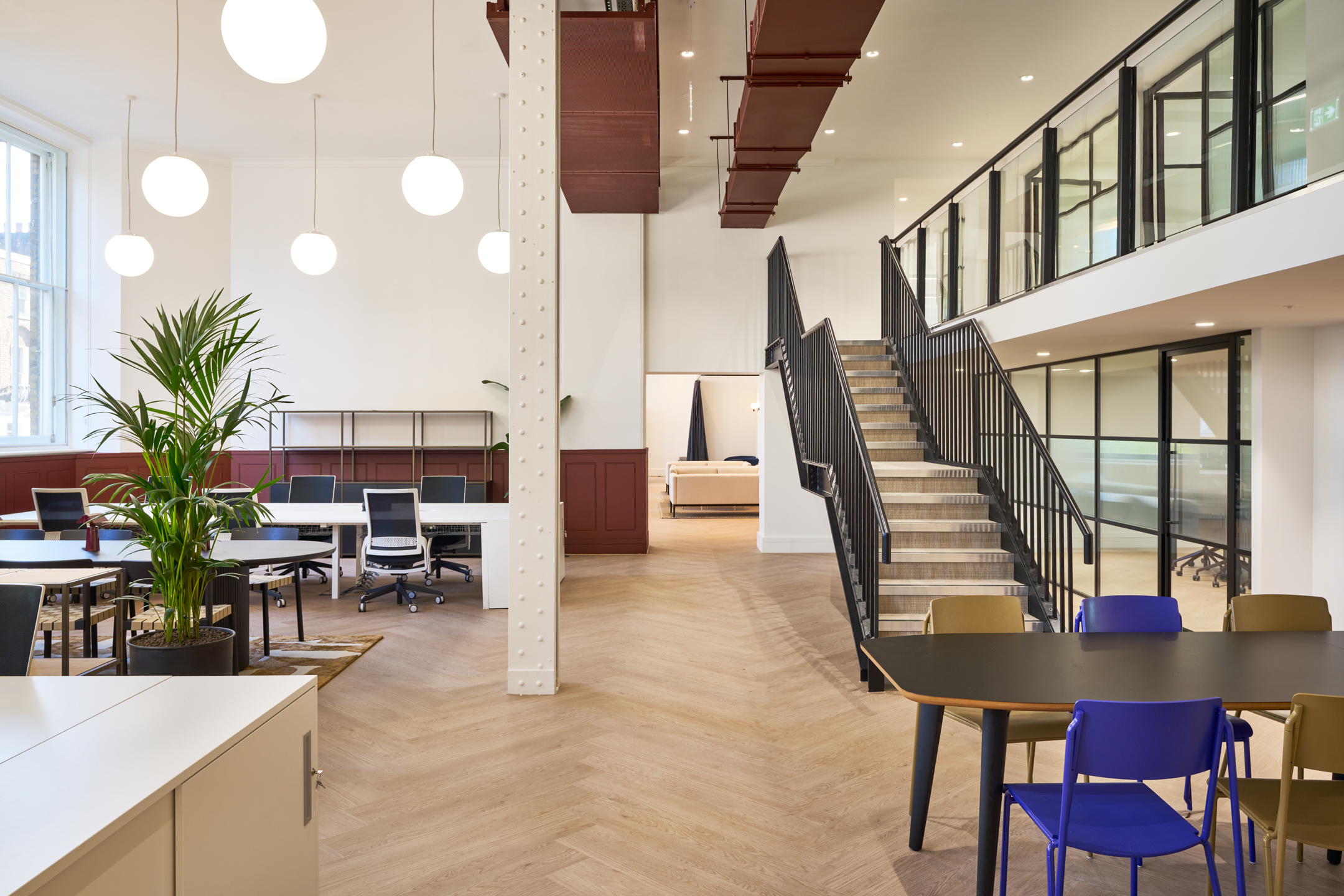
Designing for Adaptability
A successful flexible office offers areas that can transform to meet different needs throughout the day. Multi-use spaces, such as modular work zones, open, collaborative areas, and reconfigurable meeting rooms, allow employees to choose the environment that suits their tasks.
For example, a large meeting room with foldable walls can shift from a private meeting to a town hall space, adapting to individual and group needs. Similarly, breakout zones with modular seating can be rearranged to support anything from casual catch-ups to team workshops. Making spaces adaptable ensures that the office can accommodate changing demands, helping employees work more effectively in a hybrid model.
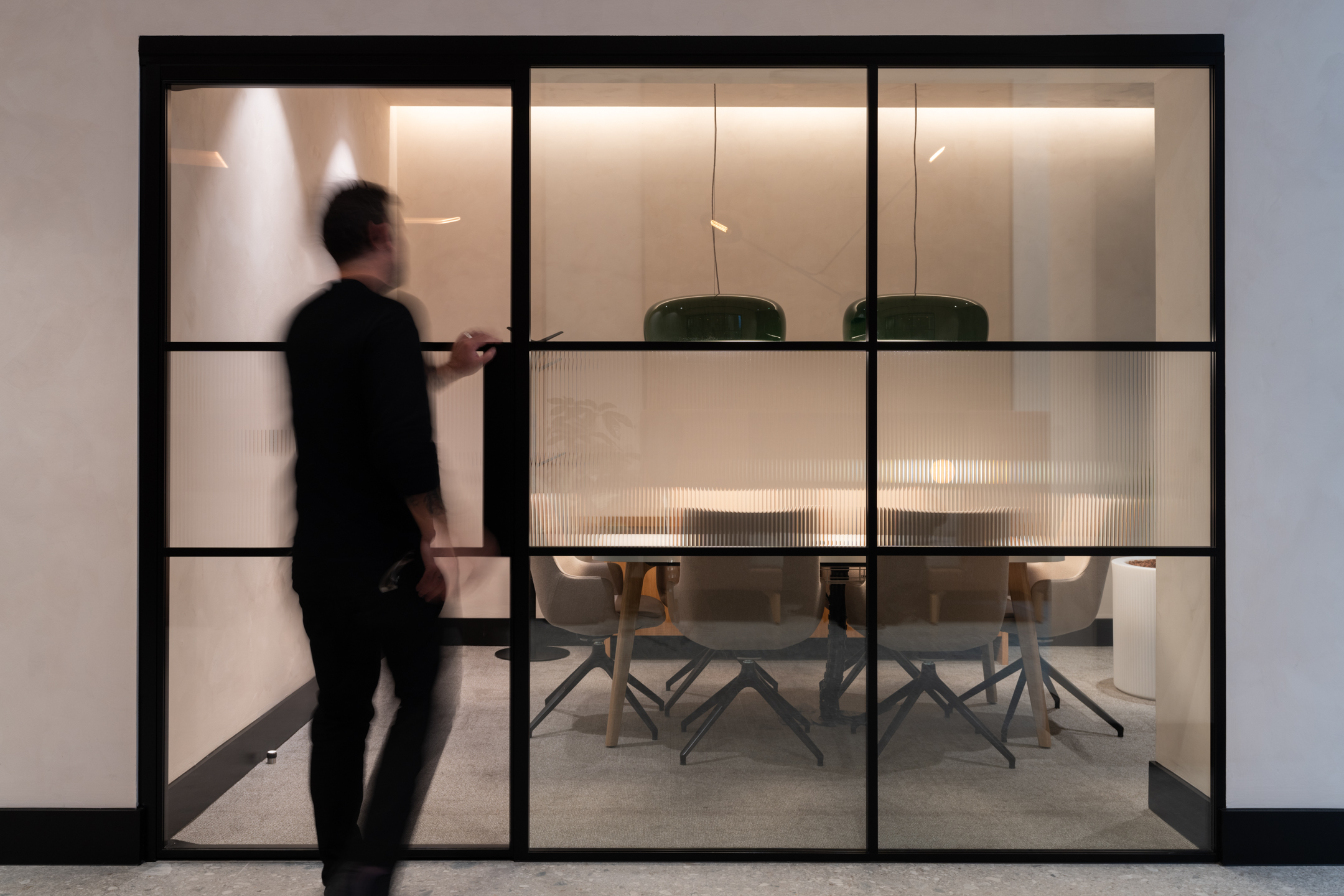
Creating Zones
One of the challenges in creating adaptable spaces is balancing quiet areas for focused work with open zones for collaboration, ensuring distinct spaces for different types of work. CBRE’s 2023 research shows that collaboration spaces were utilised 64% more than desks, highlighting the need for quiet and teamwork areas. Using acoustic elements, such as soundproof pods, room dividers, and acoustic panels, also helps create environments that accommodate different work styles. These separated zones enhance productivity by allowing employees to switch between focused and collaborative work.
Embracing Technology for Hybrid Collaboration
Technology plays a critical role in connecting in-office and remote teams in flexible offices. A HubSpot survey found that 58% of employees report using a hybrid work tool has improved their productivity. Tools such as video conferencing systems, digital whiteboards, and collaborative software play a central role in creating an environment where employees can contribute equally, no matter where they work. Investing in advanced AV systems and user-friendly meeting room tech helps prevent common hybrid work challenges, like technical issues in virtual meetings or limited access to shared resources.
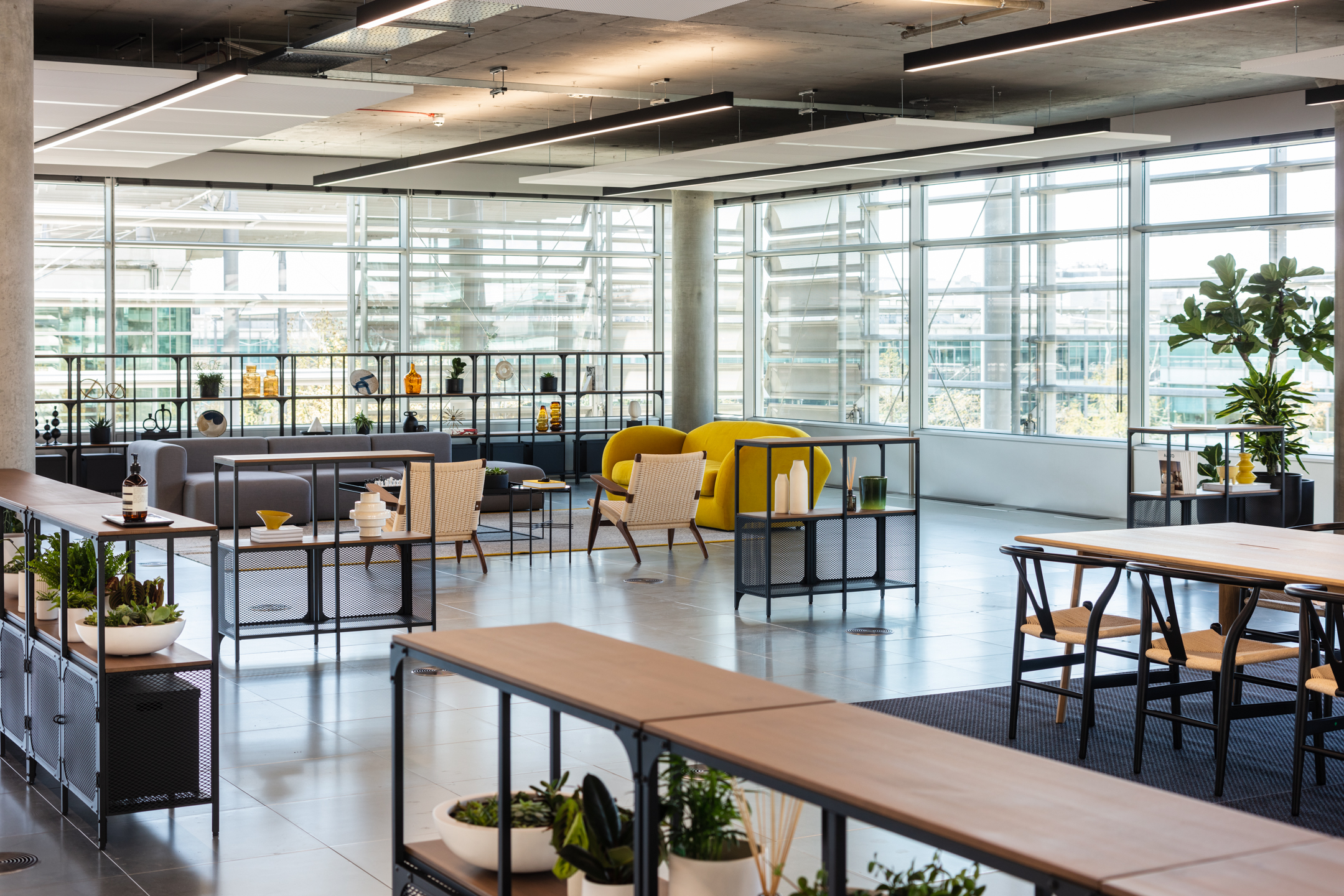
Adaptable Workstations
Dedicated desks are less common in today’s flexible spaces, where employees split their time between the office and remote locations. Instead, companies are opting for hot desking and desk booking systems, allowing employees to reserve a workstation as needed.
Flexible offices often include ergonomic seating, height-adjustable desks, and personal storage options to support comfort and productivity. Some companies also provide options for customising desks, such as adjustable lighting or space for personal items, so employees feel comfortable and empowered, whether working in the office twice a week or five.
Prioritising Wellbeing with Design
Employee health and wellbeing are central to flexible workspaces, especially as employees adjust to shifting environments. According to the Health and Safety Executive, poor mental health accounts for over half of all work-related illnesses, with 51% of long-term sick leave due to stress, depression, or anxiety. Natural light, biophilic design, and wellness amenities like meditation rooms or on-site gyms create a welcoming, health-focused space. Focusing on wellbeing benefits employees’ mental and physical health and contributes to a more positive workplace culture, where team members feel valued and supported.
Hybrid working has become the norm, making flexible office spaces crucial for catering to employees’ wide-ranging needs. Prioritising adaptability, integrating technology, creating distinct work zones, offering personalised options, and focusing on wellbeing can enhance productivity and satisfaction in a changing work landscape. Embracing flexibility doesn’t just future-proof an office but creates a workplace environment where every employee can thrive.
Find out more about Biophilic Design Boosts Wellbeing and Productivity here.

